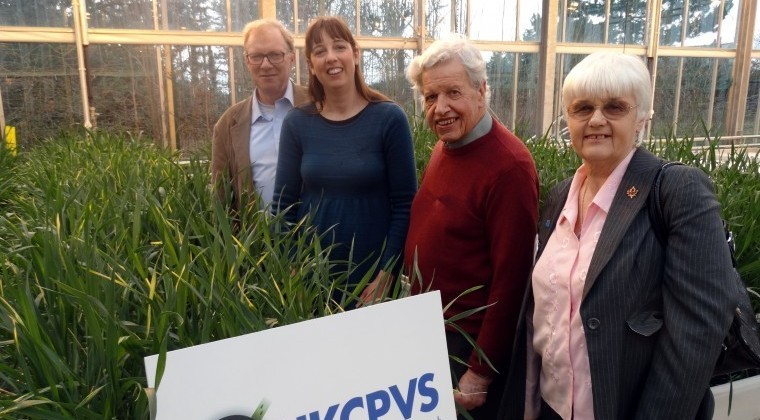The UK Cereal Pathogen Virulence Survey (UKCPVS) focuses on wheat yellow rust, and includes wheat brown rust and wheat and barley mildew. It provides an early warning system to growers and plant breeders of new races of disease that could overcome current variety resistance, and underpins the AHDB Recommended List disease resistance ratings.
Originally established at NIAB in Cambridge, fifty years later UKCPVS is still managed by NIAB but is now funded by AHDB and APHA.
UKCPVS project manager and NIAB pathologist Dr Sarah Holdgate says: “The greatest change over the past 50 years has been the replacement of the UK population of yellow rust with the ‘Warrior’ population in 2011. The rust population is now so diverse that wheat varieties react in different ways than before, making it difficult to group varieties according to their resistance. The image004.jpgcomplexity of yellow rust has never been greater, with the UKCPVS as vital today as it was when it began in 1967.
“In addition to detecting new races of diseases in the UK, the Survey also provides detailed information, and a supply of pathogen isolates, to breeders and variety testing organisations. This enables them to screen out potential new varieties and breeding lines that are too susceptible to new races of disease before they get to the Recommended List stage or onto farm. Maintaining and improving variety disease resistance allows growers to prioritise other characteristics such as yield and quality when choosing a variety.”
“Without UKCPVS, and related research programmes, the farming industry could potentially expect, within a few years, greater numbers of potentially disease susceptible cereal varieties coming through the breeding and trials system. Unforeseen disease epidemics could jeopardise food production and security at a time when industry is working hard to reduce pesticide inputs alongside a possible future loss of azole fungicides,” says Dr Holdgate.
The Survey was initiated by MAFF in 1967, following the dramatic breakdown of yellow rust resistance of the popular wheat variety Rothwell Perdix in the late 1960s.
Separate surveillance programmes were already in operation at both NIAB and the Plant Breeding Institute in Cambridge, but Rothwell Perdix highlighted the need for all to be aware of future changes in the population and that a nationally co-ordinated research programme was required. Since then the so-called ‘Boom and Bust’ cycle of disease resistance and susceptibility has been repeated with each new generation of resistant varieties.
Led by NIAB and the Plant Breeding Institute in Cambridge, the original Survey also worked with the Welsh Plant Breeding Station, NAAS (the precursor to ADAS), the Department of Agriculture in Scotland, the Ministry of Agriculture in Northern Ireland, the Plant Pathology Laboratory (precursor to APHA/Fera) and the University of Reading. Today, NIAB works with AHDB, plant breeding companies and other research organisations to assess the threat that each new race poses to commercial varieties. This includes international collaborations, linking up with Global Rust Reference Centre in Denmark.
“The methods of identifying new races of rust and mildew have changed very little over the 50 years. Races are still identified using reactions on a differential set of varieties, although recent advances in sequencing technologies, including the use of field pathogenomics, have enabled researchers to understand the rust population in greater detail,” explains Dr Holdgate.
But she considers that industry involvement is key to the Survey’s success. “A vital part of our operations are the infected plants, particularly resistant varieties, which are collected and sent to NIAB by growers, trial operators, agronomists and breeders throughout the UK. In return, the industry benefits from knowledge at the earliest opportunity of potential risks and changes that will affect them and their customers,” says Dr Holdgate.
NIAB CEO Dr Tina Barsby says there are very few scientific research projects, in the UK or across the world, which can claim to be 50 years old and, yet, be as relevant and vital to industry today as it was when it started. “As a founder member NIAB is honoured to be still leading the UKCPVS. We would like to thank all our staff, collaborators and funding bodies over the years who have maintained this critical project supporting growers and breeders,” finishes Dr Barsby.




